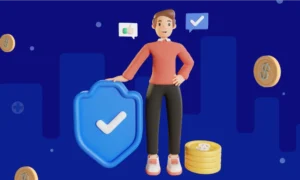Lending is as old civilization itself. The history of lending can be traced back to ancient times when lenders secure their loans with collateral. In modern times, the lending landscape has changed significantly with new technology.
Technology has enabled a more streamlined and efficient process. Lenders can now use the decision engine to reach a larger pool of potential borrowers. This is made possible by the use of big data and machine learning to assess creditworthiness.
Since the first concept of the charge card in 1950. Technology has come a long way in the lending industry. Let’s explore how technology has changed the lending landscape.
The Beginning of Credit Card
Businessman Frank McNamara came up with the idea for the first charge card. He got the idea after he forgot his wallet while out to dinner. McNamara realized that there was a need for a way to pay for things without carrying cash.
In 1950, McNamara founded Diners Club. This was the first charge card company. It allowed customers to charge their meals to their accounts and pay at the end of the month. The concept quickly caught on and other companies followed suit.
The Diners Club Card was an early predecessor to credit cards. It was made out of cardboard and had to be renewed every year. It was not until 1958 that Bank of America created its credit card.
This first modern credit card eventually became Visa. The card was first used in Fresno, California. At the time, 45% of the residents were bank customers.
Data Credit Scoring
The first credit score was developed in the late 1950s by Bill Fair and Earl Isaac. They founded the company Fair, Isaac, and Company (later known as FICO).
The credit scoring system they developed is still used today. It is based on five factors: payment history, credit utilization, length of credit history, credit mix, and new credit.
FICO scores are used by 90% of lenders to make credit decisions. They are also used to determine things like interest rates and credit limits. A high score indicates a low risk of default.
The mortgage industry was one of the first to adopt credit scoring. In 1970, Fannie Mae and Freddie Mac began using credit scores to assess loan applications.
Using Big Data
Big data is a term used to describe the large volume of data that is generated each day. It can be generated by social media, internet searches, and credit card transactions.
This data can assess creditworthiness. Lenders can use it to identify trends and target potential borrowers.
Big data is changing the lending landscape. It is giving lenders a more comprehensive view of potential borrowers. Using data in lending has come a long way since the 1950s. But it was not until the late 1990s that lenders began using more sophisticated data analytics.
Predictive Model Markup Language (PMML) is a standard used by lenders to score potential borrowers. PMML uses algorithms to predict the probability of default.
Using data analytics has made the lending process more efficient. Lenders can use PMML to score loan applications. This helps them to identify high-risk borrowers and reduce fraudulent applications.
Online Lending
In 2005, the first peer-to-peer lending platform was launched. This marked the beginning of a new era in lending. Zopa was the first platform to offer personal loans. And since then, the industry has exploded.
Peer-to-peer lending is a type of lending that allows borrowers to get loans from individuals instead of banks. The platform acts as a middleman between the borrower and the lender.
Peer-to-peer lending has grown in popularity because of the low-interest rates and flexible terms. It is also a more convenient way to borrow money. Using big data and machine learning has made peer-to-peer lending more efficient. Lenders can use these technologies to assess creditworthiness. And borrowers can use them to find the best deals.
How Digitalisation is Changing Lending
The first iPhone was released in 2007 and also marked the beginning of the digital era. Since then, there has been a dramatic increase in using mobile devices.
Digital transformation has allowed for the development of new financial products and services and enabled new business models to emerge. Online banking and mobile payments have made it easier for people to access banking services and make payments.
Technology has also made it easier for people to access financing. According to the 2010 LendingTree survey, 21% of homeowners used the internet to apply for a mortgage.
The popularity of online lending can be attributed to the convenience and speed of the application process. Online lenders also offer competitive interest rates and terms.
Conclusion
Overall, technology has played a pivotal role in revolutionising the lending industry.
From applying for a loan to how lenders assess risk, every aspect of lending has been affected by technological advancements. This has led to a more efficient and user-friendly process for both borrowers and lenders alike.
With the current rate of technological innovation, the lending industry will likely continue to evolve at a rapid pace in the years to come.

































